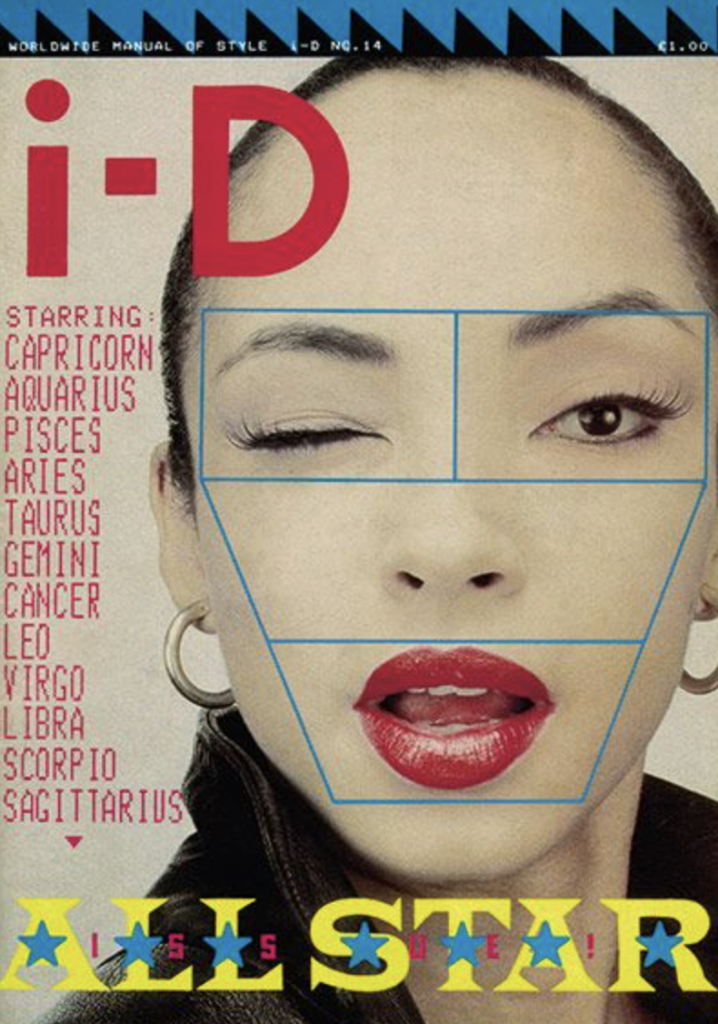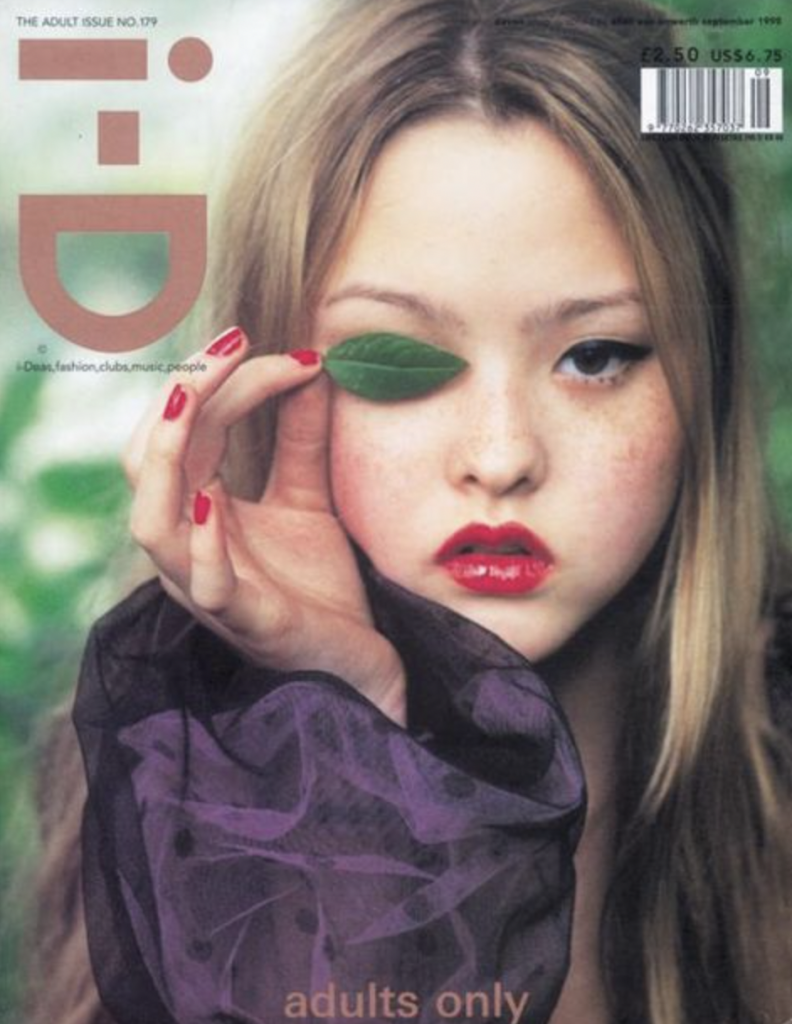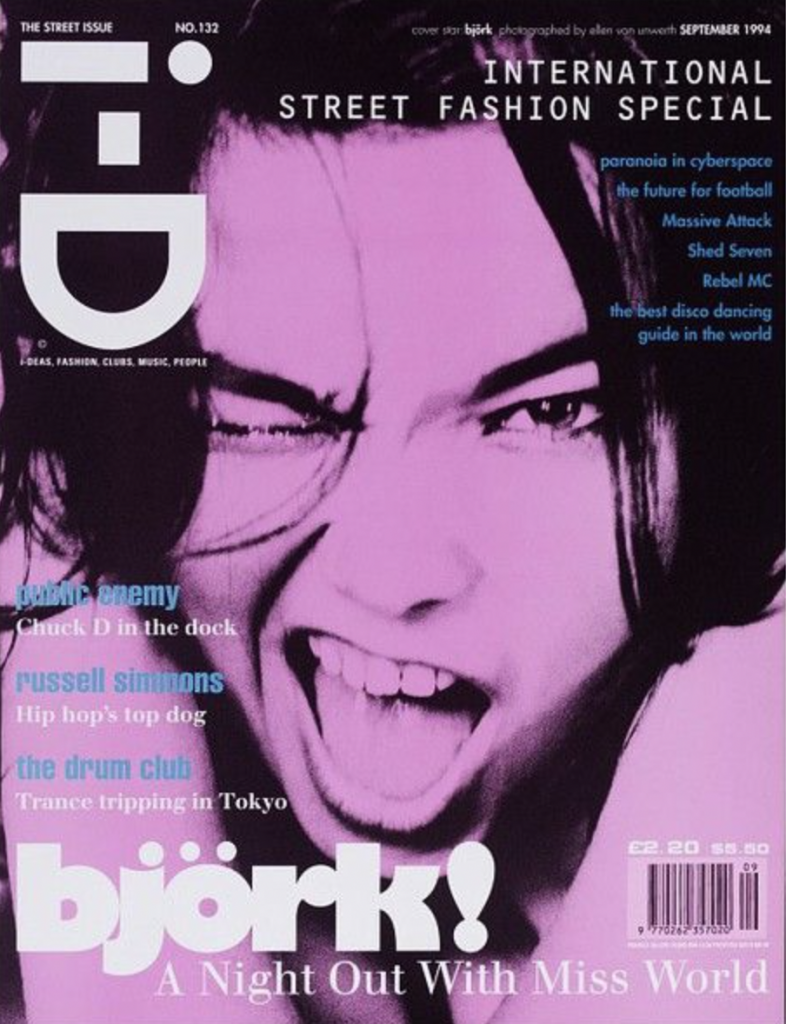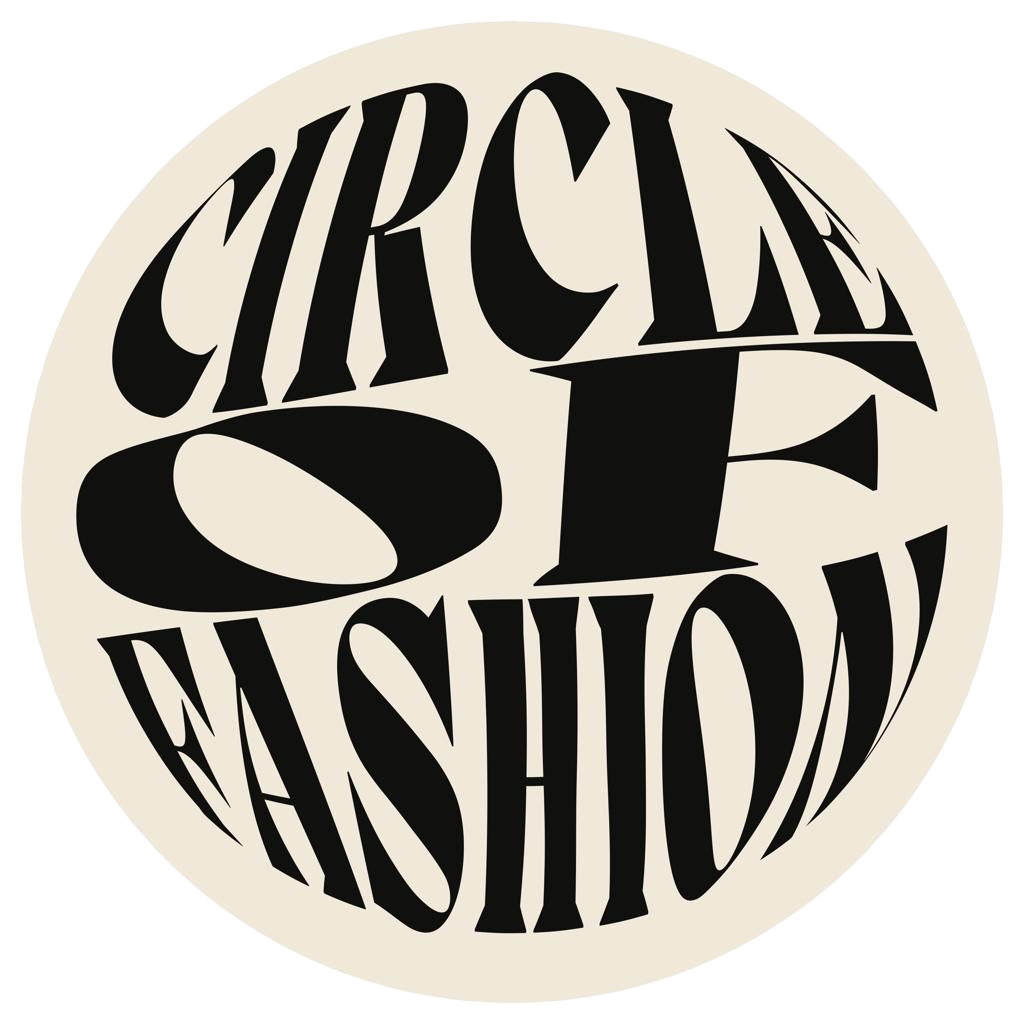Written by Thelma Gauthier
Edited by Ella Caverson
i-D magazine was created by Terry Jones in 1980, and initially embodied a culture of rock, punk, and anti-conformity. Jones, who previously served as art director for British Vogue, brought his unique perspective as an artist of many mediums to the magazine. Jones’ ambition as an artist stemmed from a broad desire for representation of marginalized and alternative scenes fitting seamlessly with the punk fueled spirit of i-D. In contrast with the narratives of mainstream fashion magazines such as Vogue, i-D’s roots as a fanzine provide it with a distinctive perspective into fashion, one that emulates the vibrancy and diversity in youth culture and ordinary people.
The structural form of the magazine
i-D curated a refined, yet sophisticated aesthetic, characterized by imaginative photography and intentional graphic design.
The magazine’s winky face logo adds to the sense of légèreté, and youth that’s consistent in all that i-D represents. The cover models are often pictured closing one eye–a signature of the magazine that is congruent with the playful logo. The cover makes an exceptional use of color which detaches itself from the neutrality and realism seen commonly in blueprint fashion magazines.



The magazine’s print quality has consistently captivated attention on newsstands, even withstanding the new era of digitalization. The magazine started as a fanzine, a self-published magazine created by enthusiasts to share their niche passions, outside of mainstream culture–mirroring other relevant movements in punk culture at the time. These passionate, yet amateur designers of the fanzine pamphlets were a popular outlet for eccentric artists, creatives, and people alike. For instance, fashion journalist Loïc Prigent prior to his success drew inspiration from i-D and utilized the fanzine format to channel his passion for both fashion and music. Fanzines provided an accessible platform for anyone to share their voice, serving as a precursor to modern blogs. i-D has since evolved from a fanzine into a glossy magazine, a more polished, high-quality newspaper, printed on—you guessed it—glossy paper. The magazine now serves as a canvas that reflects the essence of photography, graphic design, and content, embodying a truly artistic endeavor that embraces aspects of its punk roots.

The spirit
Originally, i-D reflected the underground spirit present in London’s youth culture that was just beginning to touch mainstream media. The punk magazine managed to retain its bold and innovative foundation through its transition from amateur to professional. It did so by embracing broader topics in culture outside of just fashion. i-D proves its status as more than a fashion magazine in their issues briefing consumers on topics on UK nightlife, upcoming designers and the latest trends. Kanye West and Kate Moss are two celebrities who have endorsed the brand, further bolstering i-D’s status as a propagator of pop-culture. For i-D’s 30th anniversary, The Guardian compiled some of their most iconic covers, many of which are provocative in nature. One cover featured Madonna, with the word “seXsense” in large font, accompanied by a list of words in smaller font such as “kiss”, “bcup”, “love”, and “h-rt”. The collaboration between Madonna and i-D produced controversy but resulted in an empowering example of a young woman embracing her sexuality, challenging many norms and taboos of the time. This theme of embracing sexuality was congruent throughout Madonna’s career and contributed to her regard as a sex-symbol. As an advocate for public sexual health and as a patron of provocative protest, the pop star’s persona aligns seamlessly with all that i-D was built on. This collaboration is one example of many that captures the individuality and thoughtfulness that is intrinsic to the i-D mission. Despite the modern association with high-fashion, i-D distinguishes itself from the orthodox fashion elites in its unabashed risk-taking which continuously reaffirms the brand’s originality and status as a trailblazer in mass media. By embracing sultriness and provocation within a bourgeois milieu, i-D cultivates a sense of liberating irreverence that is both emblematic and distinctive.
i-D’s business history
i-D was acquired by the powerful publishing and media company, Vice, in the early 2000s. The Montreal-based company was initially called Voices of Montreal before being its rebrand as Vice in 2010. The parent company also acquired other media outlets including the Los Angeles Times and Channel 5, broadening its coverage to include a wider range of cultural topics, from fashion to politics; all of which was hugely influential in the evolution of i-Ds identity. Valued at $5.7 billion in 2017, Vice was seen as an eclectic company and distinctively sophisticated in the media industry. However, the brand’s shift to appeal to a new generation of youth and establish a more prominent social media presence in recent years was unsuccessful. This ultimately resulted in the sale of i-D and Vice’s bankruptcy in May 2023.

After the split from Vice, i-D magazine was most recently purchased by Karlie Kloss, former supermodel turned investor and co-founder of Bedford Media publishing house.Kloss acquired i-D as a philanthropic venture and opportunity to leverage her background in fashion and to delve into the business aspect of an industry which she possesses great literacy in. Critics have called into question the magazine’s originality under the formal supermodel’s leadership; her connections to wealth and privilege feel incongruent with i-D’s punk ethos–an aspect constitutive to the magazine’s original success and identity.
Following Kloss’ acquisition of i-D, was the appointment of the former director of creative content at SSENSE, Thom Bettridge, as the new editor-in-chief. Bettridge has extensive experience in the fashion industry and has collaborated closely with emerging designers and artists which will support the magazine’s reorganization and redefinition of its editorial line as well as its projected return to print in March 2025.

Will i-D retain the traditional youthful, rebellious elements that originally brought them success,or will this lead the magazine to conform, becoming just another derivative of the elite fashion publications it once was contrasted against? When i-D returns, it will be interesting to see whether they are able to effectively captivate the authentic rebellion they once embodied and find success in print, or if their comeback will mark the end of i-D in print media.
